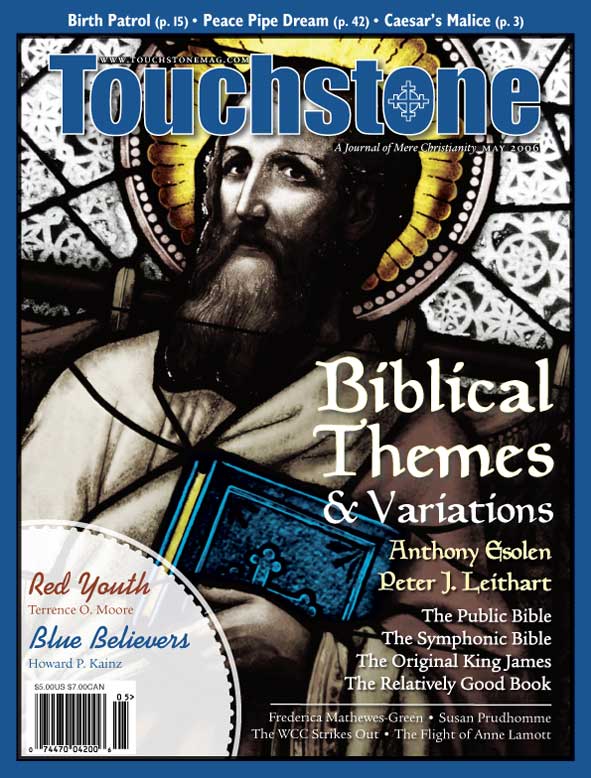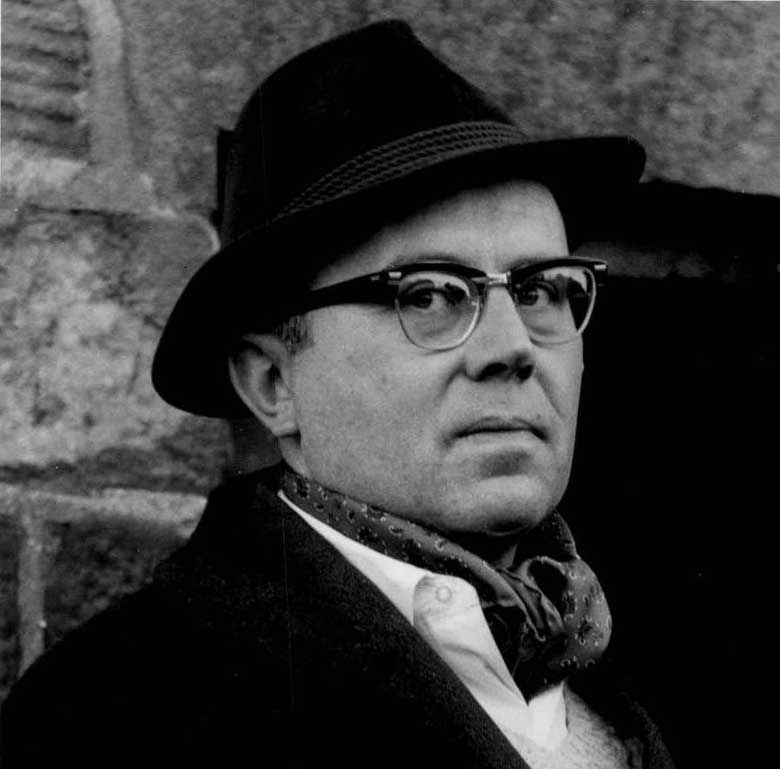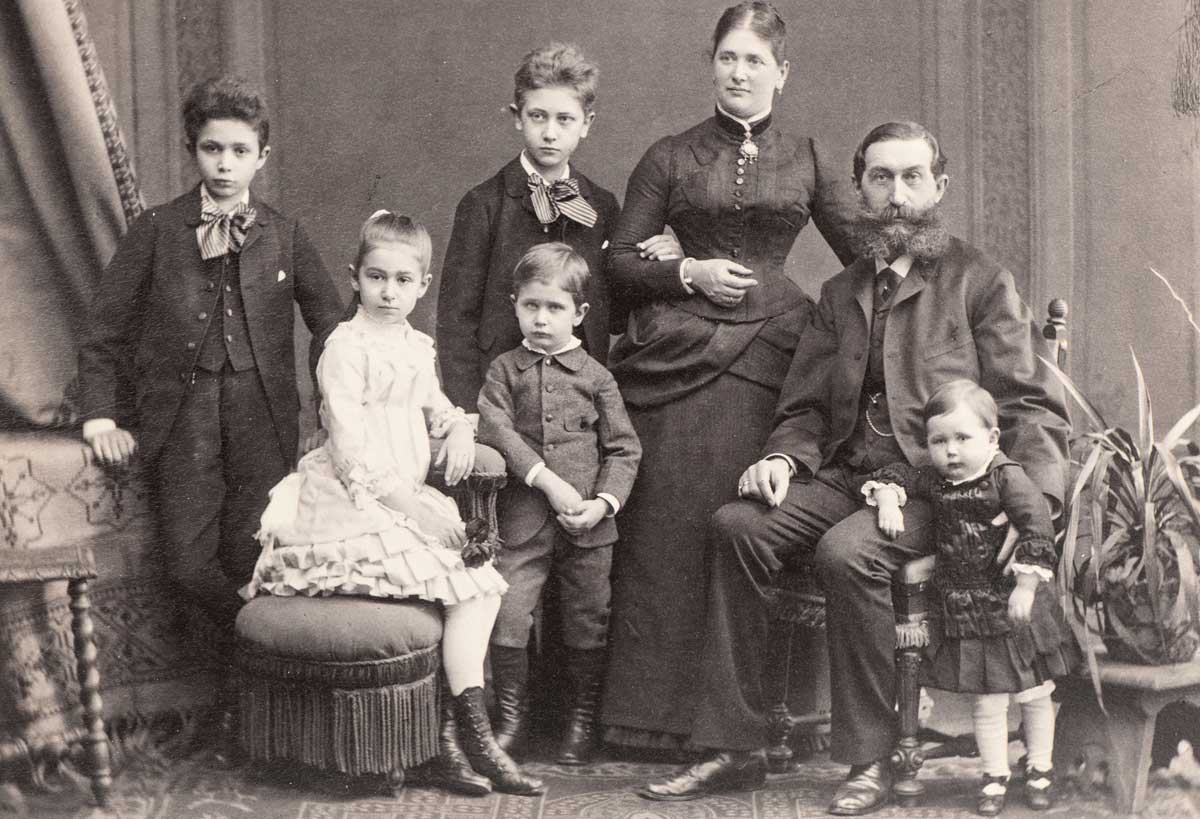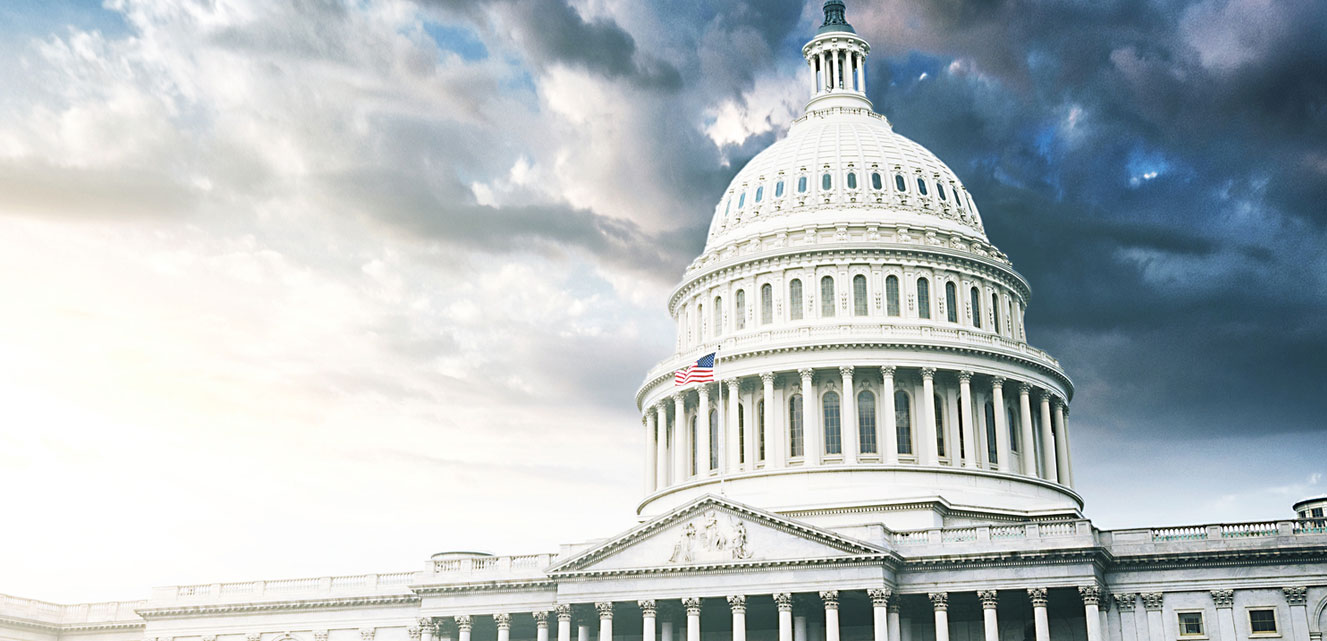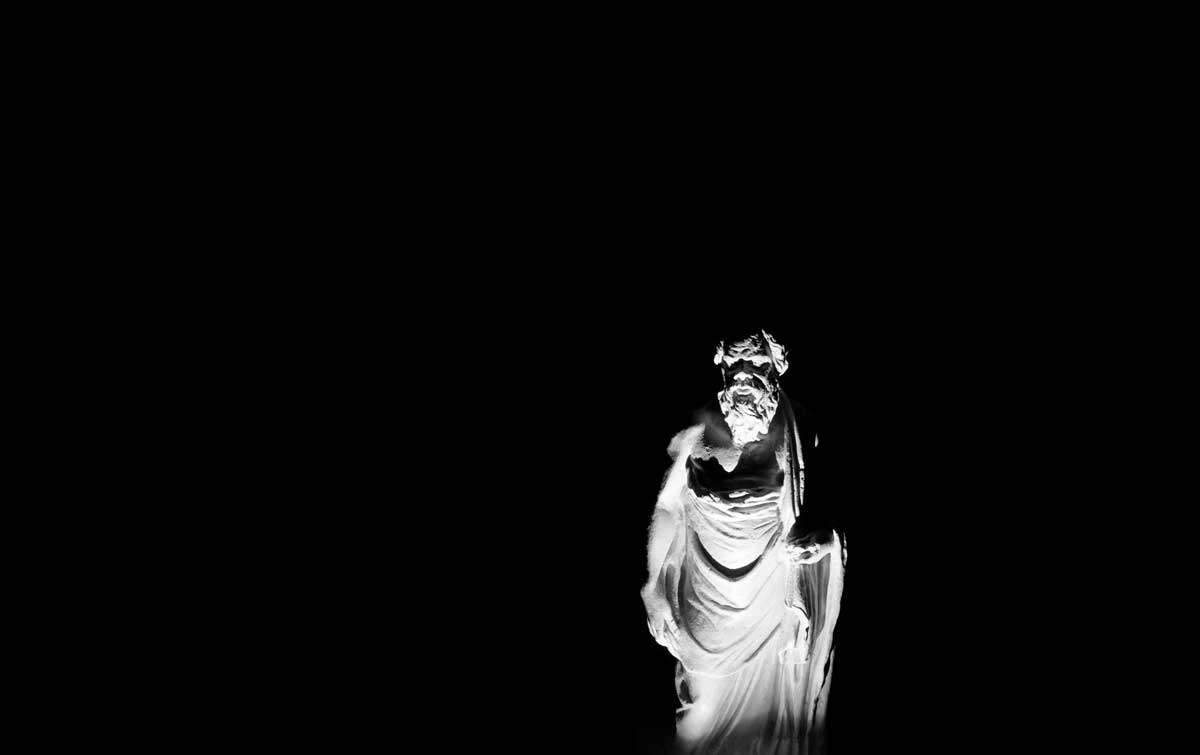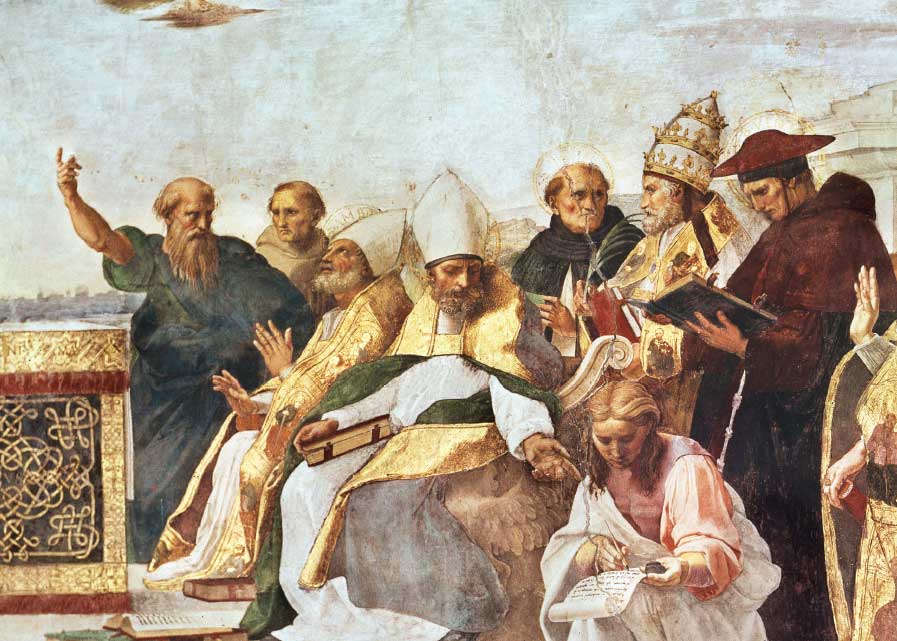Feature
Not Harvard Bound
Some of America’s Most Promising Youth Are Seeking an Even Higher
Education
Those who wish to glimpse what the future holds or even to know present culture in its purest form very often look to the mental and moral health of the nation’s youth. And what they find is generally discouraging. The over-sexed, underdressed teenagers who seem to alternate between hanging out at the mall and spilling out the intimate details of their lives on myspace.com do not seem to be preparing themselves for positions of moral and political responsibility. Even at the other end of the spectrum, at the nation’s leading universities, young people seem to lack strong character.
In the mid-eighties, Allan Bloom’s The Closing of the American Mind offered a depressing diagnosis of America’s “flat-souled” youth: university students who lacked heroes, a love of the great books, or even a sense of evil, who lacked, in short, what the Greeks called thumos or spiritedness. Their “primary preoccupation . . . is themselves, understood in the narrowest sense.” Whatever the differences among these students, they shared the common belief “that truth is relative.”
A decade and a half later, in the pages of The Atlantic, David Brooks offered a similar portrait of the “organization kid,” constantly talking on his cell-phone, keeping up with an extensive e-mail correspondence, participating in half-a-dozen extracurricular activities, all the while keeping himself on the honor roll at an elite university. Notwithstanding his impressive drive, he lacked the thumos, or as Brooks put it, the sense of chivalry, expected of university students in the first half of the twentieth century. Above all, the organization kid avoided any kind of moral discussion or judgment. Even those who called themselves religious did not believe in original sin.
More recently, Tom Wolfe has exposed in I Am Charlotte Simmons the decadent behavior of students on America’s premier university campuses.
Another Story
Flat-souled youth. Organization kids. Charlotte Simmons. As accurate as these portraits of America’s contemporary youth culture may be, I have become increasingly convinced that they are local accounts, based on observations of students at the University of Chicago or Princeton or Stanford or some other elite institution, that tell only one story—and perhaps not the story that gives the greatest insight into the future, or of one possible future, of America. There may, in fact, be another story with a far happier ending.
We have long assumed that the elite universities and colleges prepare the brightest and most ambitious students in the nation to lead the country in every field. Thus, the impoverishment of soul among these students has become increasingly a cause for gloom.
The old assumption might still be correct, but based upon my experience at a leading charter school in Colorado and what I know to be taking place in other charter and church schools around the nation, as well as among homeschoolers, I believe the time is coming when we shall view the lack of thumos in young people, caused ultimately by their lack of a love for truth and beauty and for God, as a blue-state malady in an increasingly red-state America. The lurid accounts of moral decline in contemporary students simply do not describe the mental and moral condition of the students I teach every day.
Increasingly, I am putting my money on these latter students—bright, moral, faithful, energetic, and hard-working young people in red-state America—rather than on those sophistic and often morally stunted youth currently attending the nation’s major universities. By “red-state America” I do not mean simply Republicans or people who happen to live in the red states. I mean the culture that deliberately embraces traditional morality, principally based in the Christian faith, most prevalent in, but not confined to, the “red states.”
If my thesis is correct, we would not expect to find a predominance of great-souled students on elite campuses, since Ivy League universities and their equivalents—at least for now—are enclaves of relativistic, secular, blue-state America. To find great-souled students, we must cast our nets to the other side of the boat.
Red-State Promise
Allow me to introduce you to a red-state student. Lest I embarrass her, I shall give her a pseudonym, Promise.
Promise’s parents are still married, although both of them are children of divorce. Her mother had a successful career that she had worked hard to achieve, but after a year of trying to balance work, motherhood, and marriage she decided to stay home. It simply took too much out of the new mother emotionally to leave her child in day care, and she always felt harried in trying to do everything. She has never regretted for a moment being at home with her child.
Promise and her family go to church every Sunday. She is involved in a youth Bible study and sings in the church choir. With her education and her family, Promise takes nothing more seriously than her faith.
Promise has never set foot in a public school. Her parents discovered in their freshman year of college how little their public schools had taught them and how unprepared they were for higher learning. Moreover, they would never allow their daughter to be exposed to the drugs, sex, and crass behavior that are the norm from middle school onward. Promise’s mother homeschooled her daughter until she was nine. When Promise reached the fourth grade, her parents enrolled her in a school started by their church.
The idea for the school came when the pastor realized that, when parents kept asking him what school they could send their kids to, in which “the values they learned at home wouldn’t be undermined at school,” he had no answer. Promise stayed in this school through eighth grade and then transferred to a charter school that had a reputation for rigorous academics. Promise spends at least two to three hours per day on homework without complaining. She enjoys her classes very much, particularly history and literature because they offer great insight into human nature and therefore into her own world. She will graduate at the top of her class.
Promise does not really date. She has been out with different boys to school dances and other events but has never gotten serious with any one boy. Her parents have talked with her quite a bit about not having sex until marriage. Promise has read Wendy Shalit’s A Return to Modesty. Her favorite work of literature is Pride and Prejudice, which she has read twice and whose BBC film version, which she owns, she has wept through at least half-a-dozen times.
Promise’s World
Though innocent, Promise is not overly sheltered or naïve. She cannot help seeing what goes on in the world and is disgusted by much of it. She and her family talk about the culture regularly.
She knows some girls do things that she would never do: yell at their parents, drink heavily and occasionally do drugs, sleep with guys, fail to take school seriously. Promise does not think of herself as superior to these girls; she is not holier-than-thou. She simply feels sorry for them. They obviously have not been taught the right things at home or at school, and they are not happy as a result.
Promise thinks feminism stupid and unappealing. Promise likes being a girl and looks forward to the pleasures and responsibilities that come with womanhood. She is pretty and enjoys feeling pretty. She loves to baby-sit and would do it for free if she did not have the desire to give her parents some financial relief, however small, while they save a small fortune for her college education. “Why would women not want to be or act like women?” she wonders whenever she hears this or that feminist tenet.
Promise is not a political junkie, but she does enjoy talking to her parents about politics and seeing how her history and government classes shed light on current events. When she begins to vote, Promise will most likely vote Republican. If you were to ask her why, she would answer, in part, in terms of disliking various forms of liberal extremism.
Principally, she will vote Republican because she agrees with the party on moral issues. She finds, for example, the idea of abortion abhorrent. Human life is precious, and a baby in the womb is human life. She pities women who have abortions and wishes they would give their children up for adoption.
Promise wholly supports the war on terrorism. This sweet girl will tell you without batting an eye that anyone who blows up a building or decapitates someone for a misguided faith is pure evil. Promise is glad that strong and brave men carry guns to protect this nation both at home and abroad.
Promise is currently searching for “the right college.” She has stellar test scores and flawless grades, loves to read, and writes better than most college seniors. She could get into any college but worries about what most colleges teach, especially the elite ones. She is not closed-minded; she knows she still has plenty to learn. She simply insists on going to a college whose professors do not have a radical agenda and that attempts to provide a moral environment. Harvard is not even on her list.
Promise’s Future
Promise is ambitious in the best sense of the term. She wants to do well at university, not just to get a usable degree but to learn. She will study extremely hard. She knows that after college she wants to work for a few years in a career that is “meaningful,” though she has not decided what that career might be.
Her goals, however, extend beyond satisfying herself, to a life lived with and for others. She wants to find a good man to love and who will love her. She wants to have children, “three or four at least.” Once she has children, she is determined to stay at home. In her way of thinking, she will never sacrifice the development and happiness of her children for a mere job. Nor will she sacrifice her own joy in watching her children grow up in order to pursue an illusory “higher standard of living.”
Promise has no idea where she will settle down to live. At first, she will no doubt go where the job market will take her, and later, perhaps, where her husband’s job will take both of them. When she begins having children, however, she will insist on living in a community that is safe, that has a truly good (i.e., not a regular public) school, that has thriving churches, and that will allow her husband to support their family without working eighty hours a week. In short, she wants to give to her children the same things her parents gave to her, the important things: safety, education, faith, family.
Promise is absolutely certain that truth exists, although she admits that fallible human beings sometimes have trouble seeing it. She recognizes the obvious differences between right and wrong. There are good men in the world, and there are bad men. There are right ways of treating women and girls, and there are wrong ways. There is beautiful music in the world, most of it classical, and there is music that debases the soul. There is true happiness, to be found in thinking and doing good things with family and close friends, and there is the false happiness of the party crowd, which always ends up in chronic self-doubt and self-hatred.
Promise’s belief in truth is axiomatic. Her life would make no sense otherwise. If you were to confront her with the fact that very smart people her age do not believe in truth, she would tell you that they were only fooling themselves, probably have a sad family life, have not been raised properly, are chasing an unrestrained freedom that they wrongly imagine will end in happiness, or do not know God.
Promise’s Friends
The reader may doubt the accuracy of my portrait of Promise, yet I can assure the reader that the young woman I describe is the genuine article, is very sure of herself, and has a number of friends. And while I have deliberately chosen a young woman to represent the mental and moral proclivities of the red-state student, Promise has brothers and will one day have suitors whose moral acumen will be equal to hers.
Recently, I spoke with about a dozen students individually to find out whether my assessment of their moral sensibilities was correct. I asked them the same questions Bloom asked his students at Chicago: Do you believe there is such a thing as truth or as “the truth”? Do you believe there is an absolute difference between right and wrong? Could you give me an example of the truth or of something that is clearly right and something that is clearly wrong?
If I told you that many smart people your age would say that truth is relative, could you tell me why you think they believe that way? Do you have any favorite books? Do you have any heroes? Do you think there are or have been people who are evil, and could you name someone evil? The students’ responses to these questions revealed to me young people who are anything but flat-souled.
To the question whether the students believe in truth, I received an emphatic “yes” from the overwhelming majority: no qualms, no equivocating, no hesitation. What is truth? Those answers are even more interesting.
“There is an absolute truth that acts upon us whether we realize it or not. Today people believe that truth is relative to the individual. Certain of these ‘truths’ are in accordance with the absolute truth and others are not. There is right and wrong, and there is white and black,” said one. “God knows the absolute truth. Humans can never understand all of it. From him we can gain knowledge,” said another.
“The truth is universal, natural. It’s there; you can’t change it. There will be a lot of wrong answers, but there is only one truth.” “The truth comes from God. What he says is true. He sets the standard.” “The truth is what God has laid out, what God has given us and the laws he has established.” “The truth comes from the Bible and God’s law.” “People can’t pick and choose what’s right and wrong [just] for them.”
The students’ most common, probably because it’s the most obvious, answer for a clear wrong was murder, sometimes stated as “murder of the innocent” or as “genocide.” The “Ten Commandments” was the most common answer for something that is right. Obeying the word of God, loving your neighbor, and loving your enemies were other responses.
Absolute Truths
It was not news to the students that even smart people hold that truth is entirely relative. When asked why that might be, they had interesting answers. One told me: “People are more tolerant these days. They choose to remain ignorant in a way. People are unwilling to accept that there is one absolute answer. They are unwilling to accept things as wrong.” Another said, “Because they don’t want to think there is anything out there but themselves. They are selfish. They don’t want to think they could be wrong. Everything is politically correct.”
“Because that person is afraid and a coward. He doesn’t want to be wrong. He doesn’t want to take the responsibility for being wrong.” “Nowadays people are raised to believe that you can’t be intolerant. They want to be good and nice and that’s it. They think you shouldn’t hurt anybody [by telling a person that he is wrong], even though if you tell them [ sic] they’re wrong, that might be helping them.” “People don’t want to be confined. They don’t want to be limited in what they can and can’t do. If they say ‘everything’s right,’ then they get the freedom of doing whatever they want to.”
Most students had favorite books and heroes. Several named the Bible as their favorite book. Jane Austen was the favorite author among the girls, with Emma and Persuasion getting at least one mention and Pride and Prejudice several. Other than the girls’ preferences for Jane Austen and a few childhood books such as the Little House on the Prairie series, there seemed to be no differences in taste between boys and girls.
Other favorite books for both sexes were The Iliad, The Aeneid, Hamlet, 1984, Holes, Ayn Rand’s Anthem, Mere Christianity, Jane Eyre, Hard Times, The Chronicles of Narnia, The Lord of the Rings. A couple of students did not have heroes, but most did. The list of those heroes included George Washington, St. Anthony of Padua, President Reagan, Patrick Henry, Abraham, Esther, Christ, Winston Churchill, Martin Luther King (“the obvious answer”), and Winters from Band of Brothers.
The students did not betray the hand-wringing non-judgmentalism in identifying evil men that Bloom’s students apparently did. They had no reservations about declaring certain men evil. (And all the evil people were men!) Certainly, Hitler was the number-one answer, as Bloom realized (two students even said Hitler was the “obvious” or “stereotypical” answer), but the list did not stop there. Saddam Hussein and Stalin ran a close second and third.
Others included terrorist groups, oppressive dictators, Cain (“where it all started”), Lenin, people who kill innocent children, and persecutors in China. One student did not narrow the list to just a few dictators: “Because of sin, all people have evil tendencies, but Hitler and people who go on killing rampages [are completely evil].” The only surprise was the omission of Osama bin Laden’s name from the list.
Morally Encompassed
It should be obvious from their answers to these difficult questions that these students have what we have come to call a “moral compass.” A large number, as in red-state America, go to church. They are well versed in the Bible and in the basic tenets of Christian belief.
They are not put off or offended by the doctrine of original sin. Rather, they see sin in the world around them and in themselves, and consequently the need for Christ’s saving grace. They understand that personal freedoms must be accompanied by individual responsibility lest moral chaos ensue.
One of the most refreshing aspects of red-state students’ character is their attitude towards sex and the relations between men and women. They acknowledge that there are differences between men and women and, like the French, celebrate those differences. Far from trying to deny the existence of nature and biology, as do modern feminists, the girls of red-state America embrace motherhood as the crowning achievement of a woman’s life.
The reaction to my wife’s pregnancy affords an excellent illustration. A middle-school English teacher at the school, my wife told her students that she would not be returning the following year so she could stay home with our baby. The students, the girls in particular, told her many times how much they would miss her but that she “was doing the right thing.” The students confided in her how important it had been for their mothers to stay at home with them or how they wished their mothers would have stayed at home.
Red-state students believe in chivalry and courtship. The students of today are hungry for the knowledge of how to order their romantic lives in a chaotic and crass world of sexual relations. Once someone points out to them the simple fact that the purposes of chivalry and courtship were not to oppress women but to subordinate the male desires for sex and conquest to the female ends of life-long marriage and the protection of children, the world makes sense to them again. In light of the emotional and procreative facts of life, abstinence is not a hard argument to make.
Red-State Choices
Red-state students also distinguish themselves by their college choices. They are increasingly choosing more traditional (i.e., not P.C.) colleges, not as “safety schools,” but as their first choice over more prestigious and better-known universities. The elite schools no longer command the reverence and deference of red-state America. The parents and students of “flyover country” are starting to put their money where their morals are or where they believe truth is.
One of our most distinguished students, besides being an accomplished musician and Latinist, knew almost as much church history as our resident medievalist. He would wake up at five in the morning to read Gibbon. The faculty and I figured he would want to go to Chicago or Columbia or some other history powerhouse. Instead, his choice was between Thomas Aquinas and Christendom, partly because of the curriculum of these two colleges, partly because of their moral atmosphere, but mostly because they embrace the truth as found in Scripture and Tradition.
All this is not to say that some or even many red-state students will not end up going to the Ivies and other elite colleges. This year’s valedictorian may very well go to an elite university, but mainly because she has been acing mathematics at the local university for two years and can translate Virgil without error. There are not many universities in the country that could challenge her in both math and classical languages; still, her preferred university for moral and religious reasons is Baylor.
In the old days, the way for a kid from the sticks to gain intellectual respectability was to earn a coveted Ivy League degree. The proven path to success could often result in his moral and spiritual undoing, as in the case of Wolfe’s Charlotte Simmons, if he had not already been corrupted by popular culture before getting to the university. Red-state students are not so vulnerable as they once were, however, to the morally debilitating assumptions of the culture. They are shielded and molded by the traditional institutions of church and family and, increasingly, schools.
Recent developments also suggest that red-state students (many of whom come from politically blue states) are engaged in a steady bottom-up refashioning of elite university campuses. The rapid growth in the number of Evangelical Christians attending universities such as Harvard, M.I.T., and the University of Chicago; the establishment of student organizations, such as the Anscombe Society at Princeton, promoting traditional relations between men and women; the popularity of traditional academic programs, particularly the James Madison Program in American Ideals and Institutions at Princeton; and the growing resistance of students to their professors’ liberal, pacifist, rabidly secular, and often anti-American agendas are all signs that red-state students intend to leaven radical and amoral academe with traditional morals, faith, and citizenship.
The Great Souls
The red-state students of today are, for the moment, less noticeable than their coastal counterparts. They are obviously not trying to cut a rap album or break into the Hollywood scene. They won’t be found in videos of girls and boys “gone wild” during spring break. Nor do they mix easily with the jaded moral relativists or strictly careerist types.
Yet these young men and women have plenty of thumos and quite developed ideas about what is right and what is wrong with their world. The great-souled students of whom I speak are the heirs, some would say the fruits, of a growing moral reform taking shape in this nation, principally in the red states, inspired by traditional ideas of God, family, and country.
Twenty years from now, these students will be the vanguard of this moral reform. In short, though there remains considerable cause for concern in contemporary youth culture, there are also signs of promise.
Information on the “red state refashioning” can be found in Rob Moll’s “Boston’s Quiet Revival,” Christianity Today (25 Jan. 2006) (www.christianitytoday.com/ct/2006/104/32.0.html); Amy Braverman’s “Beyond Belief,” University of Chicago Magazine (Feb. 2006); Ivan Peterson’s “A Group at Princeton Where ‘No’ Means ‘Entirely No,’” The New York Times (18 Apr. 2005); and Brian C. Anderson’s “On Campus, Conservatives Talk Back,” City Journal (Winter 2005) (www.city-journal.org/html/15_1_campus_conservatives.html).
Terrence O. Moore , a former US Marine and history professor, is the principal of Ridgeview Classical Schools in Fort Collins, Colorado (www.ridgeviewclassical.com). His ?Wimps and Barbarians: The Sons of Murphy Brown? and ?Heather?s Compromise: Settling for Mr. Right Now? appeared in The Claremont Review of Books (www.claremont.org).
subscription options
Order
Print/Online Subscription

Get six issues (one year) of Touchstone PLUS full online access including pdf downloads for only $39.95. That's only $3.34 per month!
Order
Online Only
Subscription

Get a one-year full-access subscription to the Touchstone online archives for only $19.95. That's only $1.66 per month!
bulk subscriptions
Order Touchstone subscriptions in bulk and save $10 per sub! Each subscription includes 6 issues of Touchstone plus full online access to touchstonemag.com—including archives, videos, and pdf downloads of recent issues for only $29.95 each! Great for churches or study groups.
Transactions will be processed on a secure server.
more on america from the online archives
more from the online archives
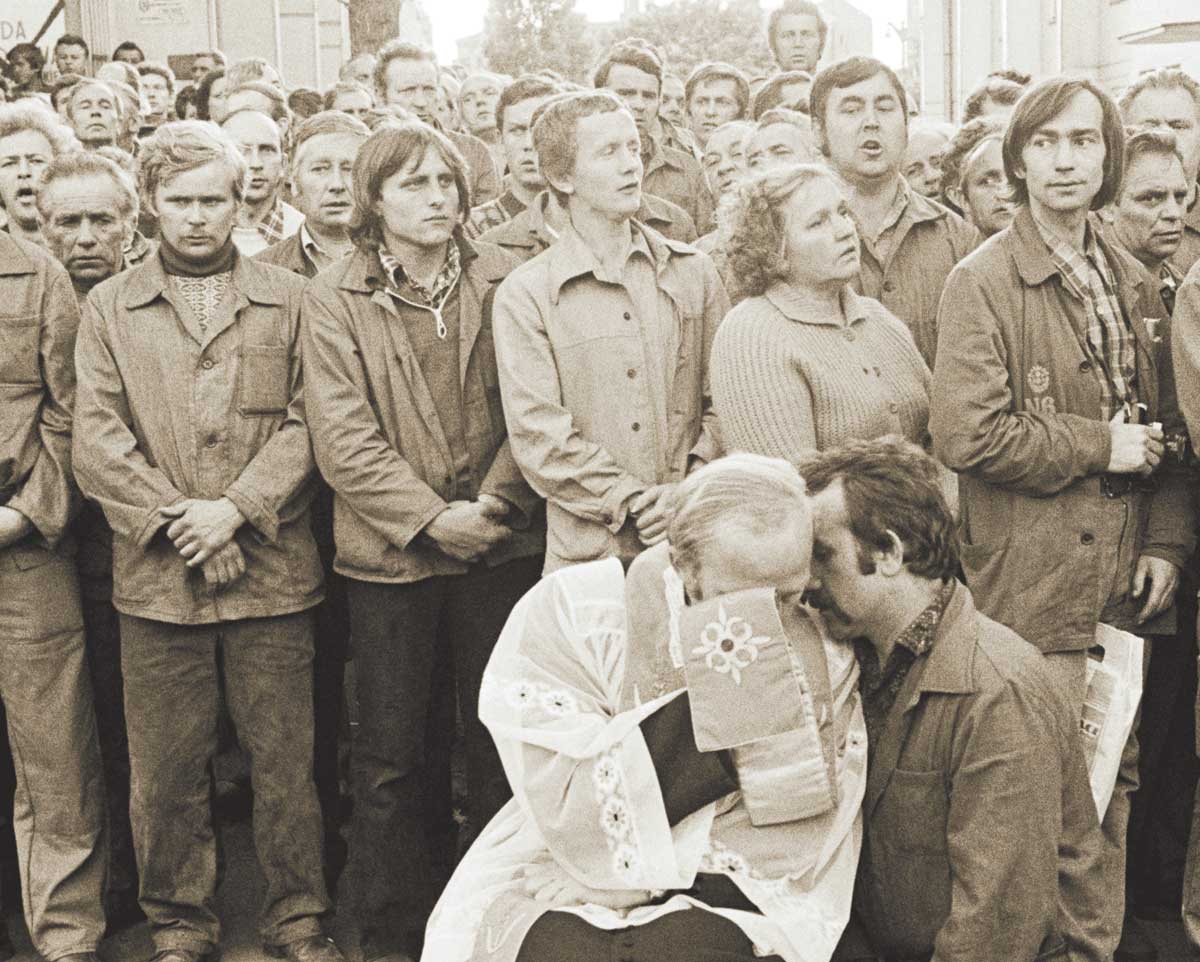
19.10—December 2006
Workers of Another World United
A Personal Commemoration of Poland’s Solidarity 25 Years Later by John Harmon McElroy
calling all readers
Please Donate
"There are magazines worth reading but few worth saving . . . Touchstone is just such a magazine."
—Alice von Hildebrand
"Here we do not concede one square millimeter of territory to falsehood, folly, contemporary sentimentality, or fashion. We speak the truth, and let God be our judge. . . . Touchstone is the one committedly Christian conservative journal."
—Anthony Esolen, Touchstone senior editor





